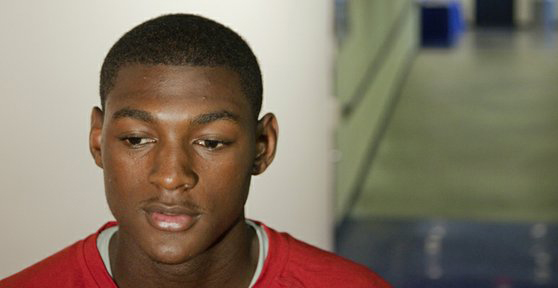Kansas Freshman’s Early Transfer Adds Another Layer of Drama to Offseason Transfer Craze
Posted by Chris Johnson on August 22nd, 2012Christopher Johnson is an RTC columnist. He can be reached @ChrisDJohnsonn.
The volume of conversation on transfers and the culture surrounding the widespread practice has dominated this college basketball offseason. A rash of in-season moves first prompted the discussion, but a public transfer power struggle elevated the dialogue to national headlines. The heated April saga involving former Wisconsin guard Jared Uthoff and head coach Bo Ryan, in which Ryan was demonized for restricting Uthoff’s potential landing destinations and interrogated on America’s most popular national sports talk radio show, brought the issue to a head and seemed to pivot the axis of public opinion in favor of the player. Ryan was painted as an unrelenting tyrant with little concern for his player’s best wishes while the ultimate outcome – Uthoff ended up transferring to Iowa, his home state – was roundly cheered as a momentous victory for Uthoff. The topic gained more steam when SI.com’s Luke Winn penned an informative piece on the transfer epidemic that brought to light the recent rise in players jumping to better teams and conferences, what he calls “up-transfers.” Whereas most players typically switch schools to find more playing time, better academic opportunity or a more favorable location, “up-transfers” move for competitive reasons in a bid to showcase their talents on a more prominent level. By Winn’s definition – up-transfers go “from a mid-major to a major”, “from a less-decorated major to a recent national champ,” or “from an off-the-map school to an elite mid-major” – there are 25 “up-transfers” with eligibility to play next season, several of whom could have conference and national championship implications.

The early departure of Doyle raises the question of whether the NCAA needs to impose tighter controls on transfer timing (Photo credit: Mike Yoder/KUsports.com).
The “up-transfer” distinction provided some qualitative clarity for the transfer trend. It also made absolute sense: With an increase in transfers that affect national brand-name programs, fans are bound to catch word of player movement in greater frequency. But it was only after laying eyes on this NCAA Q & A that the scope of college hoop transfers truly hit home. Among other interesting transfer-related queries, the interview revealed that “40 percent of men’s basketball student-athletes will not be competing at their original school by the end of their sophomore year.” That’s a startlingly high number. To no surprise, NCAA is looking into the matter: vice president of academic and membership affairs Kevin Lennon recently told ESPN’s Dana O’Neil that the NCAA is seeking ways to improve the transfer policy. There are several factors to consider here. The NCAA wants a system where players have ample opportunity to better their situations, whether for basketball purposes or an academic change of heart or some combination therein. The concern is that loose regulation will encourage players to switch schools and destabilize the coach-player relationship by enabling a quick get-away if players aren’t content with their current location. It’s a precarious balancing act that requires respecting players’ abilities to change schools – particularly as it applies to the undergraduate hardship waivers that allow players to change locations based on extenuating circumstances such as ill family members or financial distress – while preventing a borderless interschool infrastructure with little or no deterrence for transfers.









































